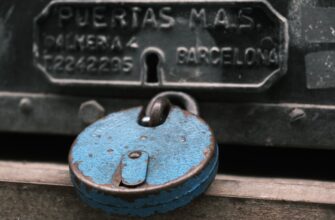- Guard Your Seed Phrase with a Password: Low-Cost Security Solutions
- Why Guarding Your Seed Phrase is Non-Negotiable
- How Password Guarding Works for Seed Phrases
- Low-Cost & Free Methods to Guard Your Seed Phrase
- Step-by-Step: Implementing Low-Cost Seed Phrase Password Protection
- Best Practices for Maximum Low-Cost Security
- FAQ: Guarding Seed Phrases with Passwords on a Budget
Guard Your Seed Phrase with a Password: Low-Cost Security Solutions
Your cryptocurrency seed phrase is the master key to your digital wealth. Lose it or let it fall into the wrong hands, and your funds could vanish instantly. While hardware wallets offer robust protection, they come with a price tag. The good news? You can effectively guard your seed phrase with a password using low-cost or even free methods, significantly boosting security without breaking the bank. This guide explores practical, affordable strategies to shield your most critical crypto asset.
Why Guarding Your Seed Phrase is Non-Negotiable
A seed phrase (or recovery phrase) is a series of 12, 18, or 24 words generated by your cryptocurrency wallet. It’s the ultimate backup. Anyone possessing this phrase gains complete control over all cryptocurrencies associated with the wallet. Simply storing it on paper or a text file is incredibly risky:
- Theft: Physical theft of written phrases or digital hacking of files.
- Loss: Damage from fire, water, or simply misplacing the paper.
- Human Error: Accidental deletion or exposure.
- No Encryption: Raw seed phrases offer zero protection if discovered.
Adding a password transforms your seed phrase from a vulnerable secret into an encrypted fortress. Even if someone finds the physical or digital representation, they cannot use it without your unique password.
How Password Guarding Works for Seed Phrases
“Guarding” your seed phrase with a password means applying an extra layer of encryption. Instead of relying solely on the raw words, you create a system where both the phrase and a strong password are required to access the funds. Here’s the core concept:
- Encryption: You use your chosen password to encrypt the seed phrase itself. This creates a scrambled version (ciphertext).
- Storage: You store ONLY this encrypted version (not the raw seed words).
- Recovery: To restore your wallet, you must decrypt the stored ciphertext using the exact same password to retrieve the original seed phrase.
This method ensures that possession of the physical/digital backup alone is useless without the memorized (or securely stored) password.
Low-Cost & Free Methods to Guard Your Seed Phrase
You don’t need expensive enterprise-grade solutions. Here are highly effective, budget-friendly ways to implement seed phrase password protection:
- BIP39 Passphrases (The 25th Word):
- Cost: Free
- How: Many wallets (like Trezor, Ledger, software wallets supporting BIP39) allow adding an optional passphrase. This isn’t part of the core 12/24 words; it’s a user-defined extra word or complex string. The wallet generates a completely new set of addresses based on the seed phrase + passphrase combination. Lose the passphrase, and you lose access to those funds, even with the seed.
- Guarding: Write down ONLY the core 12/24 words. Memorize the passphrase or store it separately and securely (see below). This is arguably the most powerful and free method.
- Open-Source Encryption Software:
- Cost: Free
- How: Use trusted, audited open-source tools like VeraCrypt (for encrypted containers/files) or GPG (GNU Privacy Guard) for file encryption.
- Process: Type your seed phrase into a text file. Use the software to encrypt this file with a very strong password. Securely delete the original unencrypted file. Store the encrypted file on multiple cheap USB drives or burn it to a CD. Never store the unencrypted seed digitally.
- Password-Protected Steel Plates:
- Cost: Low ($20 – $50)
- How: Instead of stamping the raw seed words onto a steel backup plate (like Cryptosteel or DIY washers), stamp an encrypted representation or a strong password hint (NOT the password itself!). Store the actual password separately (e.g., memorized, or in a password manager). The steel plate protects against physical damage, while the password guards against unauthorized use.
- Budget Hardware Wallets with Passphrase Support:
- Cost: Low ($50 – $80)
- How: Devices like the Ledger Nano S+ or older Trezor Model One support BIP39 passphrases. The hardware wallet securely stores your core seed phrase. You add the passphrase when setting up or accessing the wallet. This combines the physical security of a dedicated device with the cryptographic strength of password protection at a relatively low entry point.
Step-by-Step: Implementing Low-Cost Seed Phrase Password Protection
- Choose Your Method: Decide between BIP39 Passphrase, software encryption, or protected steel.
- Generate/Create: Set up your crypto wallet and note the core seed phrase securely (temporarily).
- Create a STRONG Password/Passphrase: Use a long, random mix of uppercase, lowercase, numbers, and symbols (min 15+ characters). Avoid dictionary words, names, dates. Consider a memorable passphrase like “CorrectHorseBatteryStaple42!” (but longer/more random is better).
- Apply Protection:
- BIP39: Enable the passphrase feature in your wallet. Enter your strong passphrase. Verify the new wallet addresses generated. Write down ONLY the core seed words.
- Software: Encrypt the text file containing the seed phrase using VeraCrypt/GPG and your strong password. Securely wipe the original file.
- Steel: Stamp a representation (e.g., a ciphertext snippet, a strong hint) or just the core seed words onto the plate. Do NOT stamp the password.
- Secure Storage: Store the protected element (core seed words, encrypted file, steel plate) in separate, secure physical locations (e.g., home safe, safety deposit box, trusted relative). Memorize the password or store it in a reputable password manager (like Bitwarden or KeePassXC).
- Test Recovery (CRITICAL): Before transferring significant funds, practice recovering your wallet using ONLY your protected backup and password/passphrase. Ensure you can access the funds. Wipe the test wallet afterwards.
Best Practices for Maximum Low-Cost Security
- Never Digitize the Raw Seed: Avoid typing, photographing, or storing your unencrypted seed phrase on any internet-connected device (phone, computer, cloud, email).
- Memorize if Possible: The most secure place for a password/passphrase is your brain. If you must write it down, store it separately from the seed/backup.
- Use Strong & Unique Passwords: Reusing passwords is catastrophic. Your seed phrase password must be unique and exceptionally strong.
- Redundancy: Create multiple copies of your protected backup (encrypted files on different USBs, multiple steel plates) stored in different geographic locations.
- Beware of Phishing/Scams: Never enter your seed phrase or password online unless absolutely sure you are in your wallet’s genuine recovery interface. Legit services won’t ask for it.
- Keep Software Updated: If using encryption software, ensure it’s the latest version for security patches.
FAQ: Guarding Seed Phrases with Passwords on a Budget
Q1: Is adding a password really necessary if I have a hardware wallet?
A: Absolutely. Hardware wallets protect against online hacking, but if someone physically steals both your hardware wallet and finds your written seed phrase (or you lose the phrase to disaster), your funds are gone. A password adds a crucial separate layer.
Q2: What happens if I forget my BIP39 passphrase or encryption password?
A: Your funds are permanently inaccessible. There is no recovery mechanism. This is why memorization (if possible) and rigorous testing during setup are VITAL. Consider sharing a secure backup of the password with a highly trusted individual using a “dead man’s switch” protocol if memorization isn’t feasible.
Q3: Is using a password manager safe for storing my seed phrase password?
A: Reputable, open-source, offline-capable password managers (like Bitwarden, KeePassXC) with a strong master password and 2FA are generally considered secure for storing the *password* used to guard your seed phrase. NEVER store the actual seed phrase itself in a password manager.
Q4: Can I just split my seed phrase and password and hide the pieces?
A> While better than nothing, this (“shamir’s secret sharing” lite) is less secure than proper encryption. An attacker finding most pieces might guess the rest. Encryption is mathematically stronger.
Q5: Are free encryption tools like VeraCrypt reliable?
A> Yes, when downloaded from official sources and used correctly. VeraCrypt is open-source, widely audited, and considered highly secure for file and container encryption.
Q6: What’s the absolute cheapest way to guard my seed phrase?
A> Using a BIP39 passphrase (free) and memorizing it, while storing the core seed words securely offline (e.g., written on paper in a sealed envelope in a safe). Combine this with a free encrypted digital backup on a USB drive stored elsewhere for disaster recovery.
Guarding your seed phrase with a password is one of the most impactful security upgrades you can make for your cryptocurrency holdings. By leveraging low-cost or free methods like BIP39 passphrases and open-source encryption, you significantly reduce the risk of catastrophic loss without requiring a large investment. Implement these strategies today – your future crypto self will thank you. Remember: Security is not an expense; it’s an investment in peace of mind.








